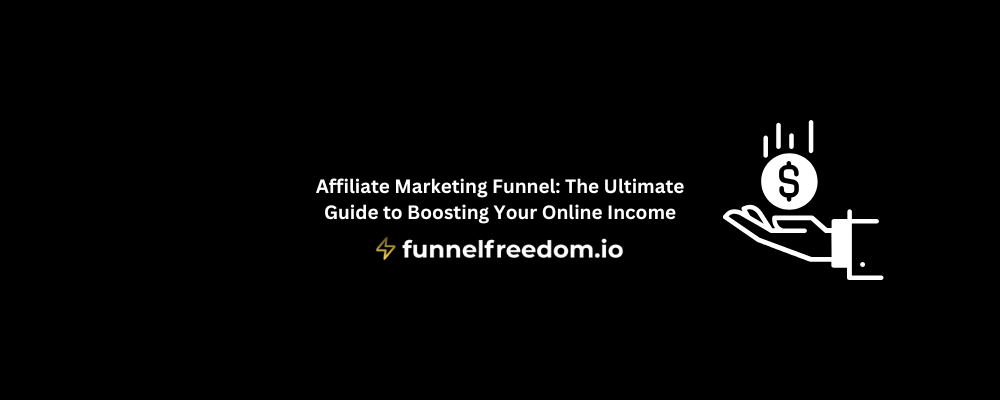Affiliate marketing has emerged as a game-changer for anyone aiming to build passive income online. Among the plethora of methods available, the affiliate marketing funnel stands out as a highly effective system. Wondering how you can build, optimize, and scale your own funnel? Let’s break it down.
What Is an Affiliate Marketing Funnel?
An affiliate marketing funnel is a structured process that guides potential customers through a journey, converting them from casual visitors to paying customers. Think of it as a digital version of a salesperson gently leading a customer toward the checkout.
The Ultimate All-in-One Software to Build an Online Business
Why Do You Need an Affiliate Marketing Funnel?
Why is a funnel essential for affiliate marketing success? It’s simple. Without one, your visitors are like raindrops on a window—scattered and directionless. With a funnel, you provide a clear path, nurturing leads and maximizing conversions.
Key Components of an Affiliate Marketing Funnel
1. Awareness Stage
This is where your audience first discovers your offer. Your goal here is to grab their attention with:
- Engaging blog posts
- Eye-catching social media posts
- Informative YouTube videos
2. Interest Stage
Once you’ve piqued their curiosity, it’s time to build interest. This could include:
- Free eBooks or guides
- Webinars
- Detailed product reviews
3. Decision Stage
At this stage, your audience weighs their options. Help them decide by providing:
- Testimonials
- Comparisons
- Bonuses
4. Action Stage
Finally, the lead becomes a customer. A clear and compelling call-to-action (CTA) is critical here. Make it irresistible!
Steps to Create a High-Converting Affiliate Marketing Funnel
Step 1: Define Your Audience
Before building a funnel, ask yourself:
- Who is my ideal customer?
- What are their pain points?
- How can I solve their problems?
Step 2: Choose a Platform
Not all platforms are equal. Popular choices include:
- ClickFunnels
- Leadpages
- Kartra
Step 3: Create a Lead Magnet
Offer something valuable for free, such as:
- Cheat sheets
- Case studies
- Free trials
Step 4: Build a Landing Page
Your landing page should:
- Be visually appealing
- Highlight your offer
- Include a clear CTA
Optimizing Your Funnel for Better Results
Use Email Sequences
An automated email sequence nurtures your leads. Include:
- A welcome email
- Educational emails
- Sales pitches
Incorporate Social Proof
Show that others trust your recommendations through:
- Reviews
- Ratings
- Real-life success stories
Common Mistakes in Affiliate Marketing Funnels
1. Overcomplicating the Funnel
Keep it simple. Too many steps can overwhelm your audience.
2. Ignoring Analytics
Monitor metrics like:
- Click-through rates
- Bounce rates
- Conversion rates
3. Failing to Retarget
Retargeting ads can bring back potential leads who didn’t convert initially.
Advanced Tips for Scaling Your Funnel
Leverage Paid Ads
Platforms like Facebook Ads and Google Ads can boost your funnel’s visibility.
A/B Testing
Test different versions of your funnel elements to see what performs best.
Expand Your Content Strategy
Experiment with new formats like podcasts, videos, or infographics.
Why Jonathan Montoya’s Affiliate Marketing Funnel Is Worth Exploring
Jonathan Montoya’s system simplifies funnel creation, offering actionable steps for beginners and experts alike. By following his strategies, you can create a funnel that converts effectively and scales seamlessly.
Conclusion
An affiliate marketing funnel is the secret to converting leads into loyal customers. You can maximize your online income by understanding its components, avoiding common mistakes, and leveraging advanced strategies. Ready to build your funnel? Start today and watch your efforts pay off!
FAQs
1. What is the purpose of an affiliate marketing funnel?
An affiliate marketing funnel helps guide potential customers through a journey, increasing the likelihood of conversions.
2. How long does it take to build a funnel?
It depends on your experience. Beginners might take a week or more, while seasoned marketers can set one up in a day.
3. Can I create a funnel without a website?
Yes! Platforms like ClickFunnels allow you to build funnels without needing a full website.
4. How do I drive traffic to my funnel?
Use a mix of free methods (SEO, social media) and paid ads (Google Ads, Facebook Ads).
5. Are affiliate marketing funnels beginner-friendly?
Absolutely. Anyone can get started with tools and resources like Jonathan Montoya’s system.
Check Out This Article: Affiliate Marketing Funnel: How to Build a Profitable System



